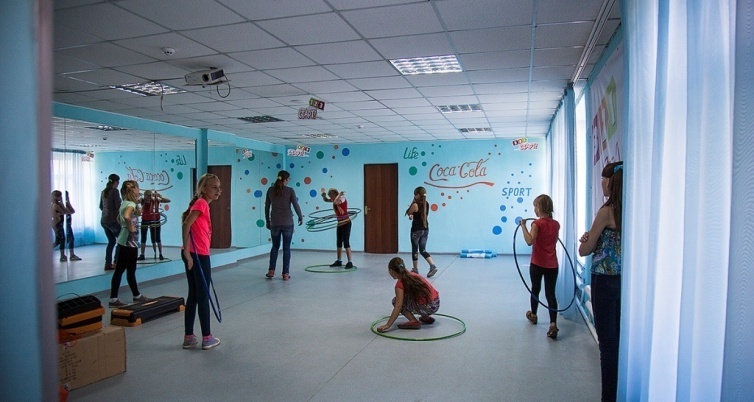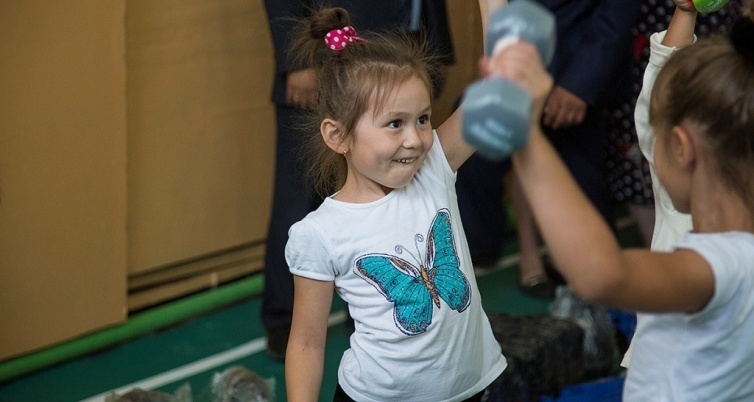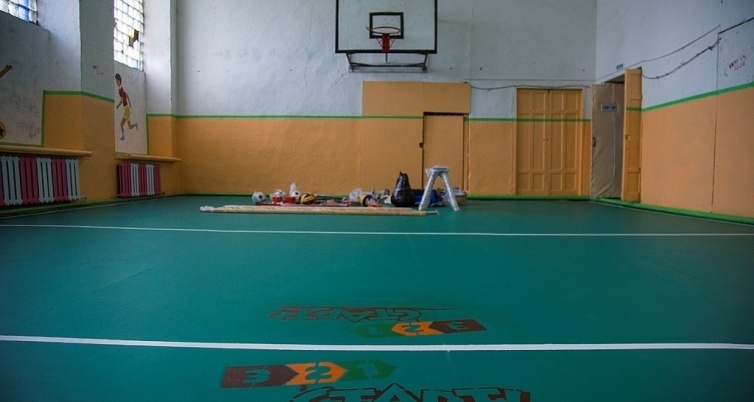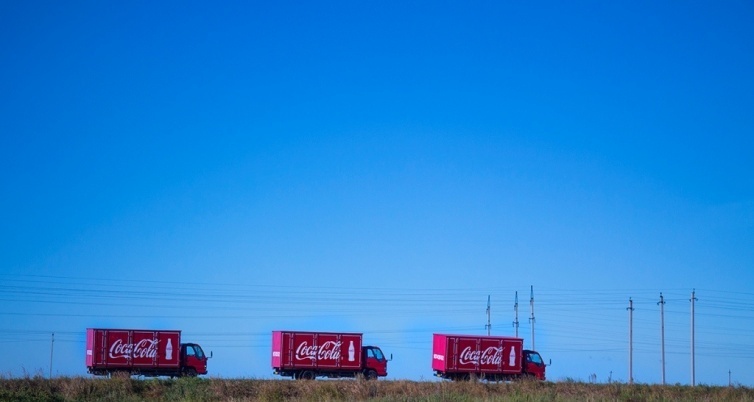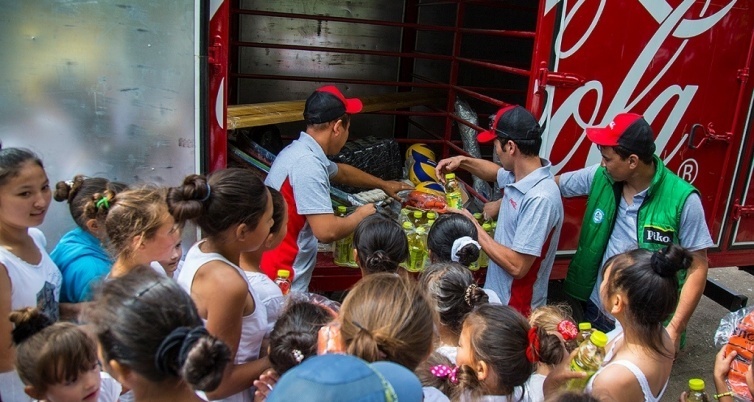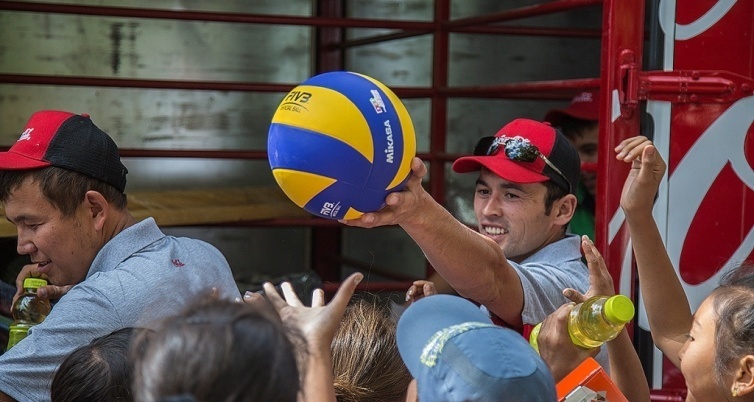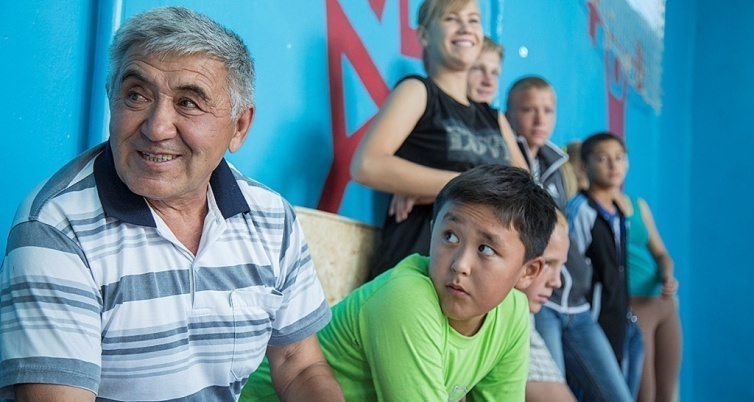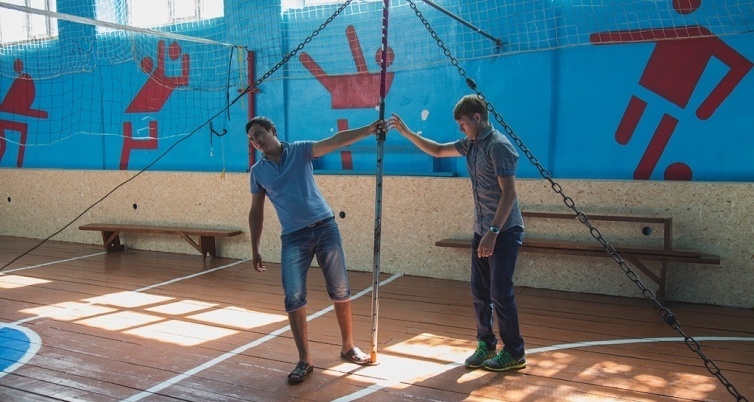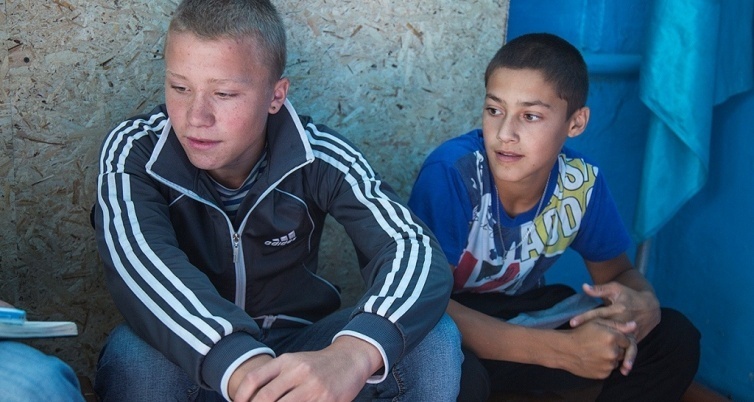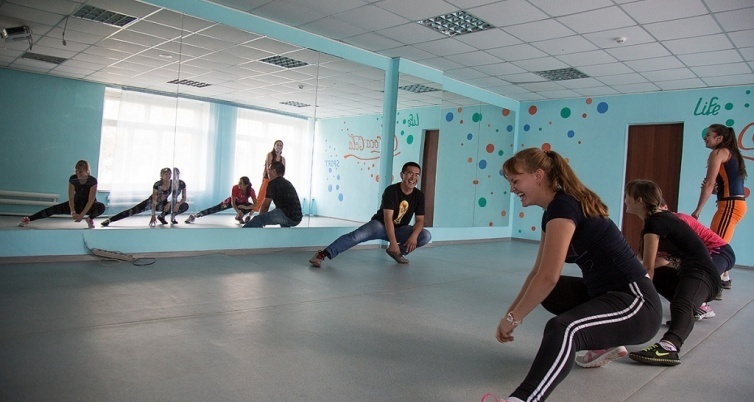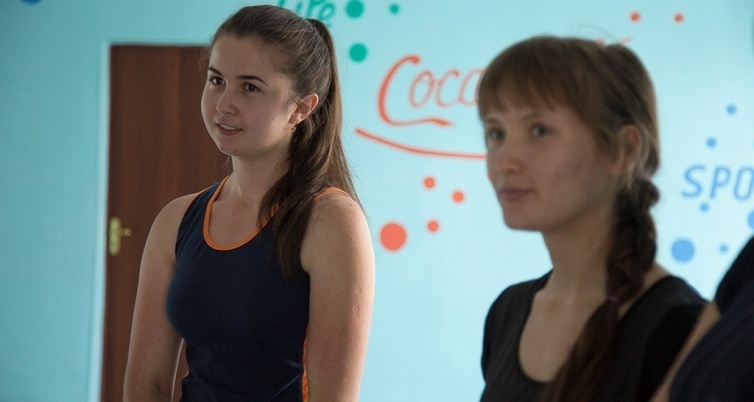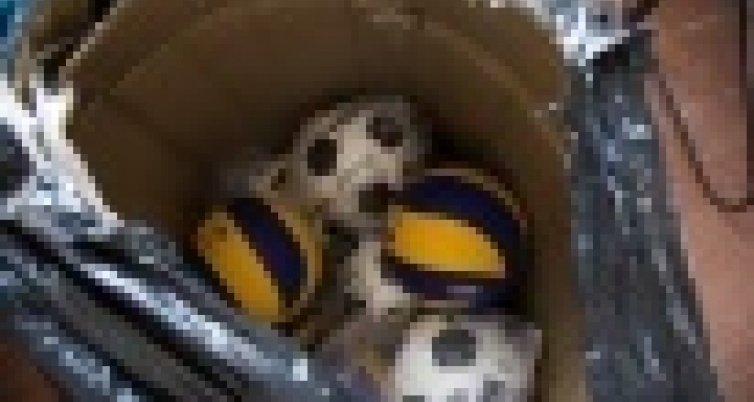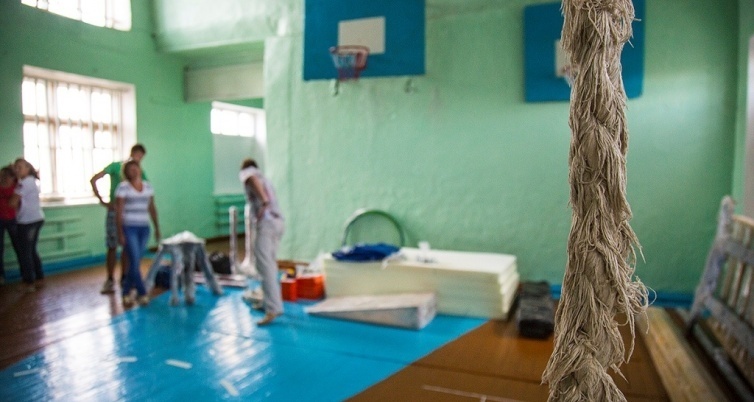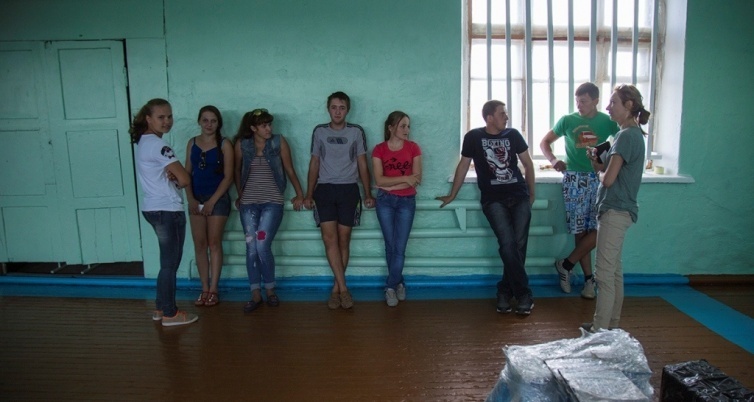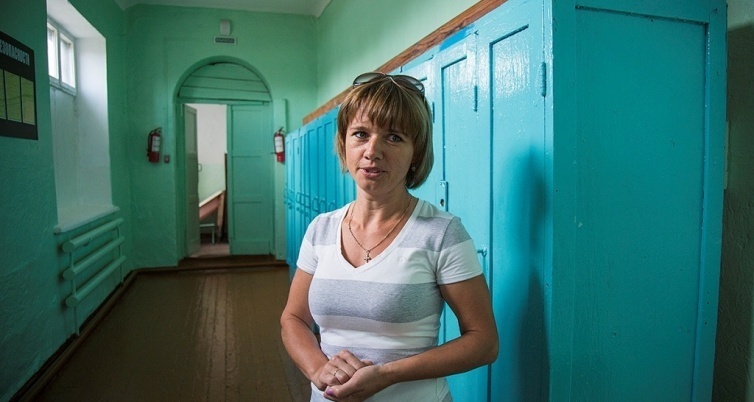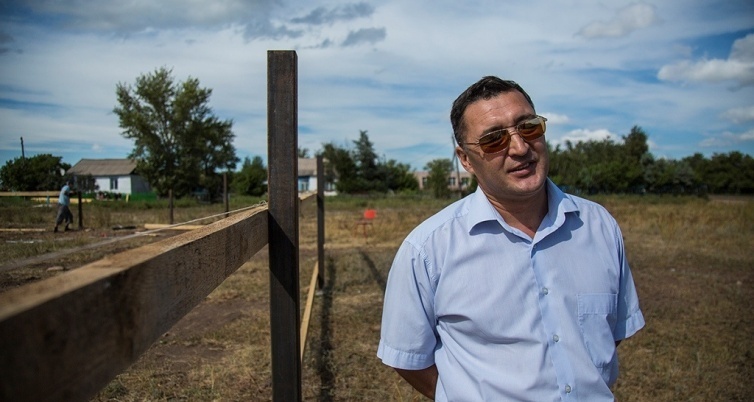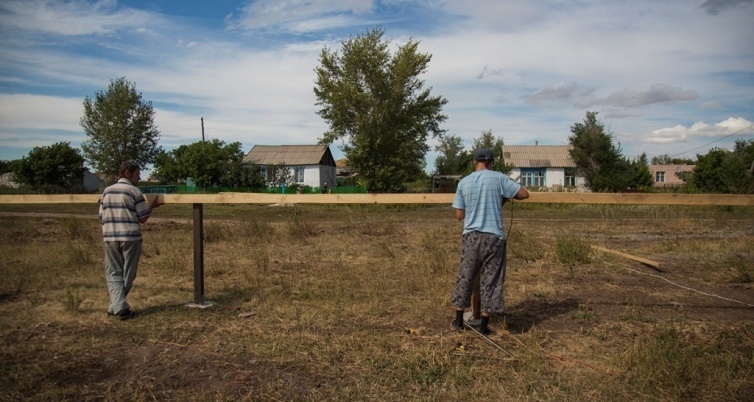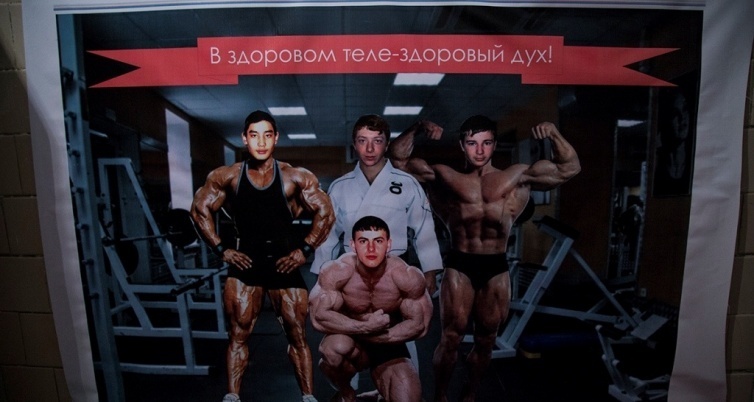Подпишитесь на наши новости:
News
другие News
European Union supports more active role of women and youth in decision-making in Kazakhstan
Qolda emergency assistance project
Qolda emergency assistance project
July 4, 2018
A big change
The Coca-Cola Company decided to help rural schools improve the teaching of physical culture, and, last autumn, requested that the Eurasia Foundation of Central Asia study the needs of the physical education departments of 28 rural schools in the Akmola Оblast.
Each physical education teacher was asked to write an application for a grant, describe what the school needs in terms of physical education, and what Coca-Cola can do to help. Based on the results of the report, applications, and meetings with teachers, the company decided to finance 19 schools in the Arshaly district of the Akmola Oblast. The project was named "3.2.1. - START!” Within the framework of the project, educational institutions were provided with assistance — 1,700 items of necessary equipment were purchased; a new innovative coating appeared in one of the schools, and the construction of a hockey rink in the most remote village district was begun. The second phase of the project is leading trainings for physical education teachers; they will be held in the second half of August. All of this was done so that by September 1, the schoolchildren of the Arshaly district have the opportunity to fully engage in physical education. In early August, the correspondents of Vlast Magazine went north to see how a socially responsible company can help ordinary people.
The Arshaly region of Akmola oblast consists of 1 settlement and 12 rural districts. Area: 5800 square kilometers. The regional center is Arshaly, which the locals, by habit, call "Vishnevka.”
But first, you need to understand what a school in a village really looks like. If in a city, a school is a place where children study, and adults periodically go to vote, then in the village, the school is the center of the village. There are concerts, meetings, and, most often, it is the only place where you can do any kind of exercise — not only for children, but also for adults.
Schools in the village can be easily found: petunias grow beside them, and at the entrance, there are statues made of resource materials (most often, car tires). The inspiration for these statues is usually drawn from Smeshariki, swans, and giraffes. The inside of all of these schools smelled the same in August: like paint. Teachers finish their vacation and are preparing intensively for the new academic year: they paint, whiten, and wash.
Volgodonovka
Volgodonovka village officially appeared in 1913; its name is most likely due to the fact that the first settlers were from the Volga and the Don. Locals say that even earlier the village was called “Eltok,” which means "well-fed people.” In Volgodonovka, there is a sand and gravel quarry and a brick factory. Many work in Astana: a 15-seat Gazelle goes from the village to the capital 4 times a day.
At the local school, built in 1964 by the villagers, there are now two physical education teachers: Muratbek Pshembaev, who is already on his pension but still working, and the younger Almazbek Zhanti. The total work experience of Muratbek Pshembaev is 43 years, "which is the biggest experience in the region.” "When I worked in the Kurgazhi district, I had two world champions: one in dumbbells — Vasily Pastukhov in the 80s, and Rymbek Abikenov in MMA."
In the Volgodonka School, there are 200 students, several of whom came to meet with us. We go into the freshly painted gym. Muratbek Balgabekovich shows the inventory: “here is the goat, he is quite old, he is 50 years old, and it's already time for him to retire," the coach jokes. He says that the inventory is obtained in various ways: for example, sponsors help, but the surest way to get inventory is to participate in Spartakiads. For the last seven years, Volgodonians have won at the “Ak-Biday” District Sports Day. The school generally takes home several trophies, so that’s how they received a beautiful ping-pong table, a basketball net, and some balls. "We have a strong volleyball team — when they go to Astana or somewhere else and win some prize, they bring us something. They are engaged in our work because this is the only gym in the village. The state used to help us; during the Soviet Union there was such a thing — it was called "centralized delivery,” and this was when the regional education departments bought inventory and distributed it to schools. But then it stopped. Thanks to Coca-Cola, this year, everything turned out well with the inventory: the company bought new balls, a balance beam, and beautiful blue mats that will be useful for wrestling and gymnastics. The old mats we patched ourselves. Almazbek teaches fighting, and usually before important competitions, we ask for mats from the neighboring village.”
"We prepared for this project very seriously. Coca-Cola representatives said, “let's introduce a new sport in schools. We offered floorball. It needs special sticks/clubs and gates, and the cover must be perfectly smooth. They came to visit us, looked at us, and said that the floor was not very good, that we needed a perfectly even one — floorball didn’t work out, but they helped a lot with the inventory,” said Muratbek Pshembaev.
In Volgodonovka, there are four volleyball teams: veterans - those over 40, young people, a school team, and teachers. Recently, the ninth grade went to Stepnogorsk for regional competitions. Boys took first place there, girls - fourth. All four generations train here, in this non-standard size hall.
Both teachers hope for future training from Coca-Cola, which will be held in late August:
"I feel that new knowledge is needed - at least in gymnastics. We can deal with game sports (laughs), but for arts and exercise we need help," says Muratbek Pshembaev.
On the bench in the gym sit two schoolchildren, and the coach mentions that the kids started doing street workouts themselves. We all start to encourage them to demonstrate the exercises. They are shy. The coach begins to unfold the horizontal bar, which he also made by hand from whatever he could find. We can get used to the fact that the horizontal bar is chained to the wall, but so far it's a curiosity. Coaches and children install a crossbar, use chains to attach it to the floor, and lay down new mats from Coca-Cola for safety.
Kostya is 14 years old and began 8th grade this year. He began doing street workouts 3 years ago, all starting from videos he saw on the Internet. He trained using Internet lessons in the courtyard of the school. Ruslan is 15 years old; he is in 9th grade.
"Although workouts are not a recognized sport, we already have a world champion in the area: Diaz Bidzhiev," Kostya proudly reports. Competitions were held last year in Astana — and Diaz really did become the world champion.
We go out into the schoolyard, and the boys begin to show their skills on the monkey bars.
"The fingerboard was painted, now it’s uncomfortable," Kostya complains. But at the end of the exercises, everyone claps joyously — the coaches, children, and us.
The Village of Nikolaevka
It is not easy to get to Nikolaevka: most of the way runs along a road, which was first pelted with rubble and then with lime. The road between Arshaly and Nikolaevka is 40 km, and 90 from Astana. Going straight from Nikolaevka to Astana is impossible; you first have to go to the district center.
We meet the principal of the Nikolaevka School, Marat Boltaev, at the entrance to the village. He stands on the site, along the sides of which stand wooden fences 1.3 meters high. This is the site of the future hockey arena, the construction of which was fully funded by Coca-Cola. Marat Bishaevich is a history teacher by education, and he tells the story of the village with passion. Nikolaevka emerged in the 19th century during the resettlement policy after the abolition of serfdom. Now 300 people live here, most of whom work in local agricultural enterprises.
Local residents say that it was hardest in the 90s: "First the Soviet Union fell apart, then the river dried up, and then they took down the school." They really did take down the school: all that’s left of the two-story building is the gym, where you can’t actually exercise.
Afterward, the school was moved to a one-story preschool building, where there is no space for a gym, according to building norms and regulations. Now 45 children are studying here, and the school is under capacity. The headmaster asked Coca-Cola for money to build a hockey rink, where children could play ice hockey in the winter.
“There will be lighting here — 8 lanterns along the perimeter, and a goal. We'll also make some benches for spare players," he says.
Marat Boltaev has only been here for a year as a school principal; before that, he worked at a college in Arshaly. "I came here myself. I like the village, and it so happened that there was vacancy here in my subject — I'm a historian. I came here to be a history teacher, but the old school principal retired,” he explains.
We go to the school, and at the entrance, there are old lanterns, although they don’t work. "We received instructions to save money and not turn on the light the light," jokes the director. But the water pipes here are new and were built two years ago under the "Water Supply to Villages” program.
Marat Boltaev explains that the average teacher’s schedule is 15 hours, but you can’t live off that, so you have to teach a second subject. And since you aren’t an expert in the second subject, you are a paid a minimum for it. So you need two degrees are required to teach two subjects. For example, in Nikolaevka School, the gym teacher is the physics teacher, shop teacher, and art teacher.
"I decided to get a second education. Next week, I'm going to Kokshetau to apply to become a physical education teacher. Not to Astana, though, because there training is more expensive,” explains the principal.
Last year, at school, children themselves made an improvised gym. And there is a poster there - school children glued their faces onto the bodies of bodybuilders, so that they had was something to strive for.
Our conversation with Marat Boltaev repeatedly comes down to my dumb question - why go to the village, whose fate is already determined. "Why did I come here? Rural people are simpler, more soulful. Children never hurt their teacher; they are easier to work with; they are more open to information. You know, the village is the soul of the country.”
Arnasay (Vyacheslavka):
The village of Arnasay, which the local call Vyacheslavka, boasts the most advanced school in the region. It has everything: contactless washbasins, showers, parking for bicycles, a garden, hot water at any time of the year, a greenhouse where vegetables are grown for the school cafeteria, energy saving lamps, and much more.
The secret lies in the activity of the director and teachers — the school uses all the opportunities that funds, NGOs, and companies provide. For example, touchscreens were obtained thanks to Coca-Cola. Good location probably played its role: Vyacheslavka is located next to the regional center and not far from Astana.
148 students go to school here. Vyacheslav Savvatiev teaches physical education. His parents wanted him to become an engineer, but he was attracted to sports — perhaps his because his brother worked as a physical education teacher at the Vyacheslav School. The principal from the neighboring village of Babotay hired Vyacheslav as a gym teacher.
He worked for two years - and went on foot to work twice a week: ten km there and then back. "It took an hour. Sometimes you got half-way, and then someone would drive you the rest of the way. The salary then in 2000 was 2500 tenge.”
"I was teaching the 5th and 9th grades. I did not have any education, I could teach only thanks to what my brother taught me. I worked for a year, and after that, they gave me the younger grades. Then, in 2001, I was accepted to Karaganda State University; my brother left for Germany for permanent residence, and I came to replace him. "
Vyacheslav recalls that when he started working in the Vyacheslav School, there were three or four balls for 20 children, an old goat, and a horse. Now the gym is fully equipped: there are even 10 sets of hockey uniforms which were obtained thanks to a grant from the president. Even energy saving lighting is available in the hall. If you are able to write grants, you can get help from various organizations. Unfortunately, not all schools know how, and not all schools practice the skill — many teachers wrote projects to receive assistance from Coca-Cola for the first time in their lives. The company believes that this new skill will help schools in the future and hope that now the teachers have the necessary motivation.
The only thing missing in the Vyacheslav school — the thing that they asked Coca-Cola for — was skis. In winter, gym lessons usually take place not at school, but at a stadium. As a result, according to "3.2.1. - START!", the Vyacheslav school received 15 pairs of skis. Vyacheslav laughs that now the children have an excuse to wait for the first snow.
Vyacheslav has great hopes for the Coca-Cola training, which looks to be held in the second half of August. Vyacheslav admits that the existing qualification courses for gym teachers do not give anything sensible. For example, in 2013 he passed a three-tier course using the Cambridge system, but it was largely theoretical. "A the introductory lesson, say, you need to learn the theory, but you don’t practice much. And then our boss came, went to schools and asked us what right we have to teach according to this system. There, education is based on creative thinking, for example, first you exercise and then draw, while we focus on movement — and if you are distracted by drawing, the dynamic is lost. "
It is noteworthy that Vyacheslav School’s grant application under "3.2.1. - START! " was written not only the teacher, but also by the students. 16-year-old Chingizkhan, an 11th-grade student, made a scouting project together with three classmates:
“We were helped by gym teacher Vyacheslav Ivanovich and principal Tatyana Nikolaevna. We worked on this project for a week. The idea was to teach children survival skills in extreme situations. We needed a coach-scout who would come and teach us, and then we would become counselors. After that, we could open our camp. At the end of 8th grade, we were in a scout camp near Astana, and we liked it there. We prepared our own food, we kindled campfires, we put up tents by ourselves. We don’t know about the result yet; we hope that everything will turn out well.”
A little later, Andrei Bachishche, a specialist at the Eurasia Foundation of Central Asia, tells us that it won’t possible to finance this project, but the fund is now trying to find a way. “I don’t want to tell them no, because the project is very interesting.”
Chinghizkhan likes volleyball, football, table tennis, and basketball. In the evenings, he studies mixed martial arts at school, which he calls jokingly "funny."
“In the summer, we approached our director and said that we want to practice mixed martial arts. Before that, we ourselves went to Astana, but we want to train here. We have our own inventory - boxing gloves; all we need is a room. The director lets us practice. We come here 4 times a week. Vyacheslav Ivanovich told us that Coca-Cola bought skis for us, which is great! Now we wait until winter.
Abdil:
“Earlier we took skis from military units. My father was a military man — we used to skate on them, and it's great that now we have our skis at school. In my spare time we go for walks, play with friends on the guitar, we sit on the Internet, and when it's hot, we swim in the river, but now the water is too cold.”
The village of Izhevsk
The village of Izhevsk is 6 km from the district center. The village is big - 2200 people live here, and it even has its own cooperative — a poultry farm, where over 700 people work. This is one of the main enterprises of the Astana food belt.
There are 292 children at the local school, where Coca-Cola created and equipped a fitness room. There is a good gym in the school — they mainly play sports there, so the physical education teacher made a project to create a separate fitness room. A former assembly hall was allocated for the project. Kelzhan Ustenbekov, deputy director for educational work, a deputy of the district maslikhat, and a generally very active individual says that this room will not only be for schoolgirls, but also for the "female population" of Izhevsk, and promises that during this next year they will install the restroom. Coca-Cola not only paid for the renovation of the premises, but also supplied equipment for training: steps, skipping ropes, hoops, and balls.
“The idea is original; it solves the whole problem,” comments Andrey Bachishche. “Here, women are not engaged in any kind of exercise at all.”
The local house of culture is on the balance sheet, but it's open only for major holidays, so this school became the center of universal attraction: all sports events and discos take place here. There is also a makeshift gym for adults, but it’s mostly men who go. Recently, a new physical education coach came to the school - the girl graduated from university and is eager to fight. She tried to conduct fitness classes for women in the gym, but it was difficult due to the shells around her.
At school, we meet Ruslana, Marina, and Anastasia, all 11th-grade students. They say that they do gymnastics, athletics, volleyball, but they want something new, like yoga or stretching.
Marina Koreneva tried to do yoga at home, but realized that you need to train with the help of a specialist. We ask if the girls know that we’ve made a separate gym for them. "Yes, we are waiting for it. We were already asking for a coach,” she says. We let the girls enter the new hall for the first time.
"Wow! There are mirrors here!” Kelzhan Ustenbekov suggests immediately doing stretching exercises, and laughs: "Does anyone know more exercises? Our gym teacher will return from training and show you how to do it!”
Later, the inventory, purchased by Coca-Cola, is brought into the gym. "If I use five Hula hoops at the same time, will I lose weight?" a girl asks. "No," the teachers laugh.
Anar Station
Here, two settlements come together: Anar Station and Donetskoe Village. There is a total of about 900 people. The area boasts the oldest school in the district, built in 1936, "Stalin era,” proclaim the locals, not without pride.
High ceilings, thick walls, doors as if descended from the old Soviet films A Big Change and We'll Live Till Monday.
There are 205 children in the school, and the average classroom occupancy is 18 people. 10 offices, 17 classrooms. There are no changing rooms; each classroom has nailed-down boards with hooks for hanging outerwear. In conversation with us, the principal of the Anar Secondary School, Gulnara Tyshtybaeva, often repeats the word "tight:”
"It's terrible for us; it's hard; there are not many offices. And our children like to study, our children are good. For the third year in a row, our district has shown the best indicators for the national matriculation exams.”
Gulnara Tyshtybaeva has been working here since 1989, and several times she repeats that she never had any major repairs. Cosmetic repair teachers do by themselves: they take large ladders and paint from the railwaymen. But they are afraid to open the windows: the frames can collapse.
The gym was built in the 60s: three offices and a corridor were put together, and the ceiling was raised.
Tatyana Evgenievna, a physical education teacher, has been working in the school for 20 years. She points out some wiring that had been hanging long before her arrival. The principal proudly shows the balance beam that Tatyana's husband made.
Tatyana lists what is needed for gym class:
“We don’t have enough mats; we have only five, and they don’t even meet hygiene requirements. Five balls - not enough for a school. No track and field equipment, dumbbells, or gym equipment. Girls in the older grades are already looking after their figure, they would like some fitness-balls. We have two shifts — the last lesson ends at 18.30. The hall is always occupied, and we have training from 18.30 to 21.00. I had lessons here until 9 pm. After school, children from 8-11th grades come here. The middle school grades drop out because there is not enough space.”
High school students came to look at the new inventory from Coca-Cola: balls, goats, balls, hoops, and mats. They laugh that the old "Soviet goat" is no longer relevant.
"There are 6 people in our graduating class," Igor says. “Last year, there were only two people. This is because after the 9th grade many go to college.
"They're just not sure they can pass the exams. Such moochers,” laughs Nastya.
We discuss what they need for sports. Girls say they want to do Zumba; it helps to lose weight.
“When I was working on receiving a grant from Coca-Cola, I wanted to make fitness clubs for the girls,” says the physical education teacher. "We have more classes for boys than for girls, so the girls drop out. I feel that we lack not only equipment, but also knowledge. I would gladly go to trainings from time to time; I would study new techniques. A modern teacher needs to be constantly trained, so I can’t wait for the training that Coca-Cola promised to hold. It is important for us to learn how to adjust girls’ posture, conduct cardio exercises, and use the new training equipment as much as possible.”
Coca-Cola plans to conduct a training for physical education teachers in the Arshaly region in late August, and it will be hosted by specialists from the Fidelity fitness club. The program will include theoretical and practical exercises on correcting posture with the help of exercises, strength training, endurance, various types of workouts, cardio, stretching and even Zumba.
Sarioba
Sarioba village is the most remote from the district center — 70 km away. There are practically no roads to it, and we drive for several hours on a bumpy road. The rough trail is more than made up for by nature: here is the famous Sarioba lake. About a thousand people live in the village, all of whom work in agriculture. In Sarioba, we went along with the Coca-Cola trucks, inside of which was equipment for the sports hall.
We were expected at the school: we were greeted with music, and the entrance was decorated with balloons. There are 140 pupils in the Sarioba Secondary School. The building was built 50 years ago. Prior to the Coca-Cola program in the gym, there had been no real repairs, only cosmetic ones. It was this school that received the biggest help from "3.2.1. - START!”
Marat Bektasovich, an employee of Sport-Opt, the company which installed the floor and delivered the equipment:
“The most difficult part of our work was the remoteness of settlements and the roads, which don’t really exist. But we have overcome all of these difficulties. The floor covering, which we have installed here, is now installed in all new schools. Everyone’s moved away from wooden floors due to their fragility. This is a professional cover, usually installed where international competitions are held. When we made the calculation, this coating turned out to be cheaper than the wooden one. The manufacturer's warranty lasts for 8 years. There was a difficulty in the base - there was simple banded rubber on the floor, which is used in agricultural machinery. When the installation was performed, it took 12 people to remove the rubber.
In addition to repairing the hall, new mats, boxing gloves, goats, balls, and much more were delivered to the school. The training for physical education teachers will be conducted here.
The Station and Village of Babatay
This is the same school where Vyacheslav Savvatiev, the physical education teacher we read about earlier, went to work on foot. There are 110 yards here, and the village lives thanks to the railway station and the grain receiving enterprise. Babatay is located 30 km from Astana. In conversation with the local residents, you might hear the phrase "we got into the EXPO area,” which, in fact, means that people came here, rented accommodation, and went to work in Astana.
The local school has 52 children. There is a gym here, but it has not had heating for many years. Coca-Cola was ready to purchase equipment for the school only on condition that the heating will be fixed. It was a lucky break that the Akimat could find money for this.
Gulmira Sapargalieva, a teacher of physics and physical education, recalls that in 1995, there was no light in the village for a year and a half and no water for three years. Then everything fell apart, including the boiler room, which heated the school. So now the school has a furnace. "We are breathing this smoke, can you believe it? Children come home from school, and their sleeves are covered in soot. We demand a school uniform and white shirts — imagine how, then, parents look at us? "
Gulmira is 46 years old. She has been teaching physics for 25 years, but always gravitated toward sports - her gym teacher instilled a love for the subject in her. At school, children mostly play volleyball and basketball.
“Since this hall was not heated in winter, we had class on the second floor. There is a small gym, and we can train only in one part of it, since in another part, there is a pipe from the boiler room, making it dangerous: a ball can crash into the pipe. We were fortunate that we received a grant fоr this project and that we were able to set up heating in the hall. If not for the project from Coca-Cola, I don’t know how long we would have waited for repairs. We received 5 balls, 5 Hula hoops, 5 mats and some basketball shields from the company. This will help us diversify our classes in physical education classes and move away from volleyball and basketball.
Alima Isembayeva, Director for Corporate Relations of Coca-Cola Almaty Bottlers:
“Thanks to "3.2.1. - START!” we were able to identify the basic problems of schools and, together with the Akimat and school management, try to solve some of them, like, for example, an inventory shortage. Of course, the state of schools is not the best. We paid more attention to the schools where it was virtually impossible or was traumatic to conduct classes. Our goal is to help physical education teachers bring sports to schools, and for this, as it turned out, the most necessary thing is inventory. We want to give schools basic things that will help children exercise and play sports. In addition, we decided to help physical education teachers improve their qualifications and show them new teaching methods, so we invited coaches who specialize in classes with children and adolescents. Nowadays, there are a lot of different teaching methods, including teaching in the form of a game, so children will be able to play these games outside of class. Therefore, it is important to correctly convey the information to the teacher. We hope that our help will serve as an impetus for the development of a healthy lifestyle in the countryside. "3.2.1. - START!" is our pilot project, and in the case of its successful implementation, we plan to expand its implementation.
Source: http://vlast.kz/life/12588-bolsaa-peremena.html




